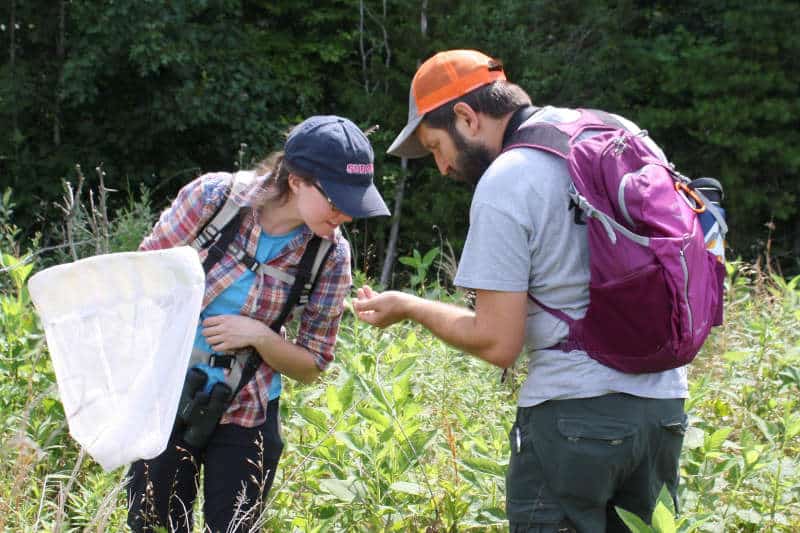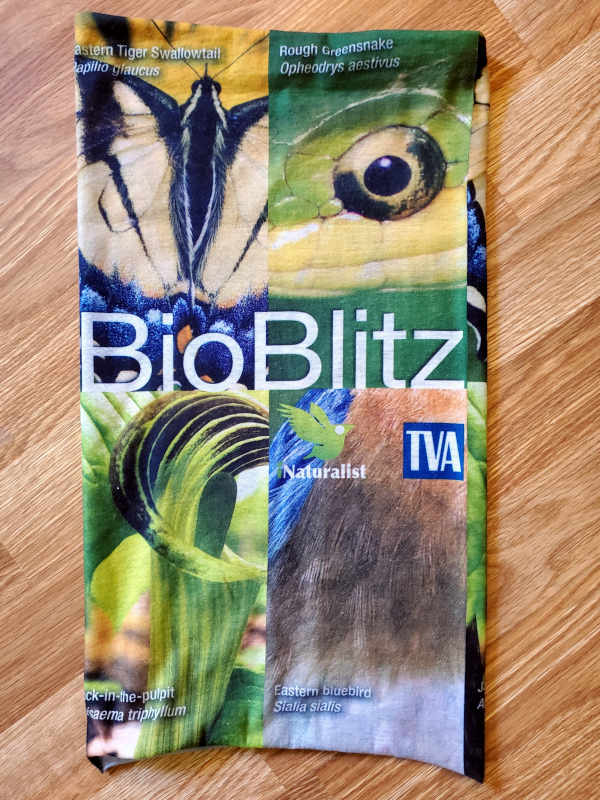
- This event has passed.
Virtual BioBlitz @ Osceola Island
August 22, 2020 @ 10:00 am – September 22, 2020 @ 11:59 pm EDT

Virtual BioBlitz @ Osceola Island
Join DLiA and the Tennessee Valley Authority for this free, family-friendly virtual event where you can be a citizen scientist and learn about the natural wonders found at TVA’s wild lands!
UPDATE: This event has officially ended BUT you should totally check out Osceola Island, anyway! It’s beautiful and full of neat biodiversity. You can still help us to catalog the animals and plants there by posting observations of the organisms you encounter to our iNaturalist project for the site. Happy hunting!
What is this event?
It’s a bioblitz on TVA’s wild lands, but virtual!
What’s a bioblitz? It’s an effort to find and document as many species as we can find in a certain place. It’s also an opportunity for you to be a citizen scientist, gathering real scientific data, while also learning about the animals, plants and other organisms that live around you!
Here’s how to participate:
(1) WATCH THE VIDEO
We’ll launch the event via YouTube on Saturday, August 22nd at 10 am EDT. Watch our video introduction to Osceola Island and see some of the neat flora and fauna that live there.
(2) VISIT OSCEOLA ISLAND
For the next 30 days (from August 22nd to September 22nd), we challenge you to visit beautiful Osceola Island. This beautiful site is located just below South Holston Dam, south of Bristol, TN in Sullivan County. The focus of our scavenger hunt (below) will be the Osceola Island Trail, a 1.8-mile loop, accessible via a footbridge. Park at the Osceola Island Day Use Area.
(3) COMPLETE THE SCAVENGER HUNT
At Osceola Island, look for these plants, animals, and other groups of organisms and post your observations of them to the free mobile app, iNaturalist.
The scavenger hunt challenge: Make iNaturalist observations of organisms that you find at Osceola Island. The challenge is to observe a variety of species: find representatives from at least 10 of these categories.

Printable version of this checklist with instructions: PDF
(4) WE SEND YOU A THANK YOU GIFT!

Fill out this short form when you complete the scavenger hunt and we’ll send you a TVA BioBlitz-themed neck buff as a thank you gift!
About iNaturalist

What is it?
iNaturalist is a really useful, free tool for taking photos of lifeforms (animals, plants, fungi, etc.), identifying them, and making species observations. These observations help us learn about the world’s biodiversity.
Getting started with iNaturalist
- Download the free iNaturalist app to your Apple or Android smartphone. You can also visit iNaturalist.org from your web browser.
- Follow the prompts in the app to create a new iNaturalist account.
- Find a cool bug, plant, or other organism. Open the app and tap OBSERVE or the (+) sign to take a photo of your organism (or choose an existing photo from your camera roll).
- Tap WHAT DID YOU SEE? to identify your organism.
- Make sure your location and date are recorded.
- Tap SUBMIT or the check-mark icon to submit your observation to iNaturalist.
- Repeat! See how many different organisms you can observe around you!
For more tips and tricks for using iNaturalist, check out their getting started page: https://www.inaturalist.org/pages/getting+started
What life have we found at Osceola Island?
Here are the Osceola Island species that have been documented on iNaturalist so far, but there are many more waiting to be found! You can help us expand this list by adding your own observations!
Check out the full Osceola Island project page on iNaturalist to see more.
Featured in YouTube video
- Shrubby St. John’s Wort (Hypericum prolificum) – This small, perennial shrub is native to eastern North America. It has beautiful yellow-petaled flowers with sprays of stamens, giving them a puffy, rounded appearance. This easy-going native makes a great yard plant: it is tolerant of a wide range of soil types and moisture levels. More info
- Great Blue Heron (Ardea herodias) – The largest heron in North America, this common, majestic bird is often found around freshwater and coastal habitats. It feeds primarily on fish, but will also munch on amphibians, small reptiles, insects, and small mammals. More info
- Wild Bergamot (Monarda fistulosa) – This small pale-purple wildflower is great for attracting butterflies, bees and other pollinating insects. In fact, its genus (Monarda) is fittingly called the beebalms. It is a member of the mint family and as such, it’s leaves have a delightfully minty smell! Blooming in mid- to late summer, it can be found in open glades and along trails and roadways. More info
- Lichens (many species) – Lichens are fungi that form a symbiotic relationship with certain algae and bacteria. Each side in this mutually beneficial relationship gets something: the algae and bacteria make food from light (photosynthesis) and share that with the fungi, and the fungi provides a substrate and protection for its food-making partner. Lichens are everywhere–especially on trees and covering rocks–but they often go unnoticed. Check out this video about lichens from our iScience program.
- Witch’s Hat (Hygrocybe conica) – This beautiful red-orange mushroom bruises black when poked and prodded. We found many of these at Osceola Island in early August, which is not surprising as this species can be gregarious (forming large clusters). More info
- White-tailed Deer (Odocoileus virginianus) – This medium-large mammal needs no introduction: the white-tailed deer is common throughout North America, particularly in the Eastern US. It feeds on a wide variety of plant life and is a surprisingly good swimmer. More info
- Christmas Fern (Polystichum acrostichoides) – This common fern is so named for its evergreen fronds that shine elegantly green among a sea of brown vegetation at Christmas time. It is one of a number of fern species found at Osceola Island. More info
- Black Ratsnake (Pantherophis obsoletus) – It is typical for this large snake to reach 6 feet in length. They are excellent climbers and are happy to seek out shelter in tree cavities. Their wide-ranging diet includes rats and other small mammals, birds, frogs, and lizards. More info
- Milkweed Tussock Moth Caterpillars (Euchaetes egle) – This moth species has a brightly colored caterpillar that is unusually gregarious (social) for most of it’s life as a larva. By forming brightly colored groups, they warn predators not to eat them, because like other tussock moth caterpillars they have hollow hairs that can “sting” anyone who grabs them. This species feeds on milkweed, like monarch butterfly caterpillars, feeding on several milkweed (Asclepias) and dogbane (Apocynum) species. More info
Resources
- Map link to Osceola Island
- iNaturalist project at Osceola Island
- List of all our BioBlitzes with TVA
- TVA Recreation
- Visit the Smokies? Contribute to our iNaturalist project there
- Learn about our iScience schoolyard biodiversity program (grades 5-8)
Have questions?
Ask Will: will@dlia.org
